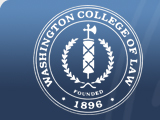Abstract
The legal standard for authenticating photographic and video evidence in court has remained largely static throughout the evolution of media technology in the twentieth century. The advent of “deepfakes,” or fake videos created using artificial intelligence programming, renders outdated many of the assumptions that the Federal Rules of Evidence are built upon.
Rule 901(b)(1) provides a means to authenticate evidence through the testimony of a “witness with knowledge.” Courts commonly admit photographic and video evidence by using the “fair and accurate portrayal” standard to meet this Rule’s intent. This standard sets an extremely low bar—the witness need only testify that the depiction is a fair and accurate portrayal of her knowledge of the scene. In many cases, proponents’ ability to easily clear this hurdle does not raise concerns because courts rely on expert witnesses to root out fraudulent evidence; thus, although the fraudulent evidence might pass the fair and accurate portrayal standard, it would later be debunked in court.
The proliferation of deepfakes severely complicates the assumption that technological experts will be able to reliably determine real from fake. Although various organizations are actively devising means to detect deepfakes, the continued proliferation and sophistication of deepfakes will make debunking fake video more challenging than ever. Witnesses who attest to the fair and accurate portrayal standard will likely not be able to identify subtle but important alterations in deepfakes. As a result, fraudulent evidence, authenticated through the Rule 901(b)(1) standard, will increasingly enter courtrooms with a decreasing ability for witnesses and courts to identify fakes. Because the technology to detect deepfakes lags behind the creation methods, deepfakes present a critical threat to courtroom integrity under the current standard.
The rising probability that juries see fake videos warrants a higher burden on the proponent of video evidence. Requiring additional circumstantial evidence to corroborate video evidence is a small but crucial step that will mitigate, but not solve, the coming deepfakes crisis. Further engagement around this topic is necessary to address the deepfakes crisis before it creates irreparable harm.

